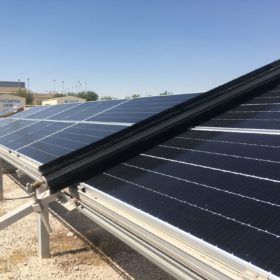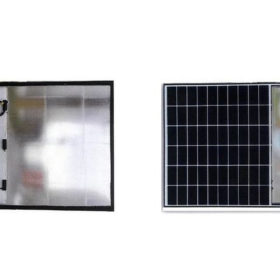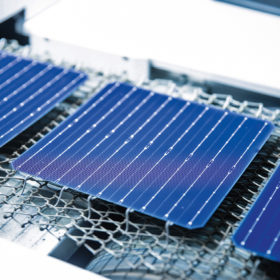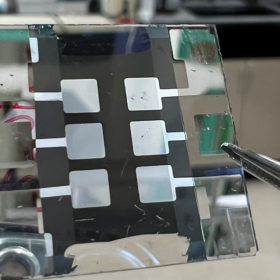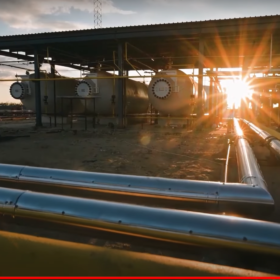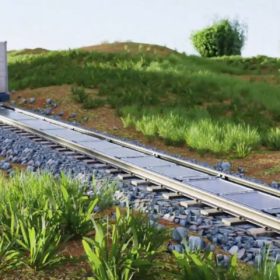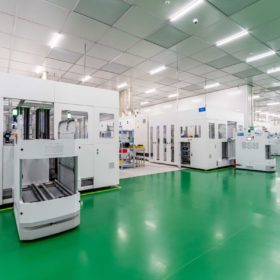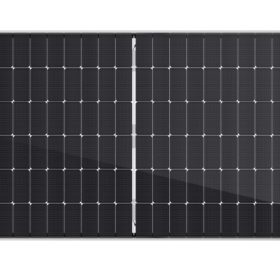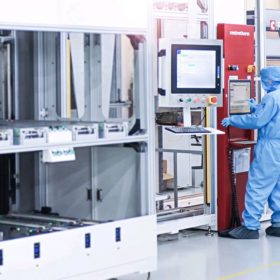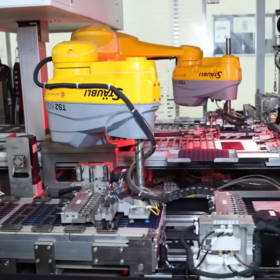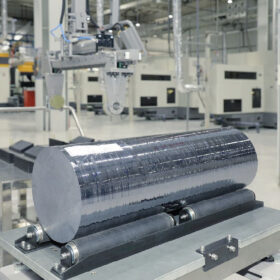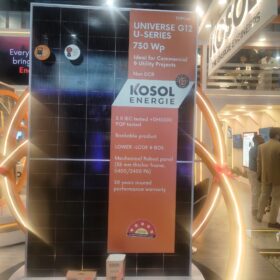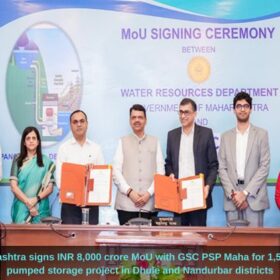Assessing vibrations in solar modules due to robot cleaning
Qatari researchers have looked at the degree to which cleaning robots could threaten the physical integrity of solar panels. They found that cleaning machines have a very minimal impact and that modules of similar sizes tend to exhibit roughly the same amount of vibration.
Water jet tech to recover glass from end-of-life solar panels
Japan’s Shintora Kosan has developed a novel water jet technology to recover glass from end-of-life PV modules. It says it can pulverize the solar cells and the backsheets without damaging the glass.
Longi plans new 100 GW wafer plant, 50 GW solar cell factory in China
Longi Solar said it will invest CNY 42.5 billion ($6.65 billion) in 100 GW of wafer capacity and 50 GW of solar cell capacity in Shaanxi province, China.
All-perovskite tandem solar cell with 27.1% efficiency via gas quenching
The US National Renewable Energy Laboratory (NREL) has achieved remarkable efficiency and stability for a wide-bandgap all-perovskite tandem solar cell. The scientist developed the device with an inverted architecture and used gas quenching instead of an antisolvent in the manufacturing process.
Emerging investment opportunities in India’s renewable energy sector
Corporate decarbonization, value chain integration, wind-solar hybrid projects, battery energy storage, offshore wind, green hydrogen, and value-added offerings such as energy-as-a-service are key trends and technologies shaping up India’s renewable energy sector and offering ample scope for investments.
Swiss startup makes first attempt to deploy solar on railways
Swiss startup Sun-Ways has developed a patented solution under which it directly rolls out solar modules between railway tracks like a carpet. The panels can be removed at any time for maintenance work.
SC Solar signs PV production equipment deal with India’s Reliance
SC Solar has secured a $41.78 million PV production equipment supply contract from Reliance New Energy Solar Ltd.
Trina Solar starts producing 210 mm n-type TOPCon solar cells
Trina Solar says its industrial tunnel-oxide passivated contact (i-TOPCon) solar cells, based on 210 mm wafers, have started rolling off the production line at its 8 GW factory in China. It will use the n-type cells to produce its new Vertex N modules, with power outputs ranging up to 605 W, and an efficiency rating of 22.4%.
JinkoSolar unveils new TOPCon solar products with record efficiency ratings
Chinese module maker JinkoSolar has released three new TOPCon solar panel variants, ranging in power from 445 W to 635 W. The most efficient modules have a rating of 23.23%. The bifacial factor is up to 85% across the three panel types, with a temperature coefficient of -0.29% C.
Centrotherm’s order book exceeds 10 GW in India
The German supplier is seeing strong demand for its solar cell production equipment as several companies in India embark on cell manufacturing.
